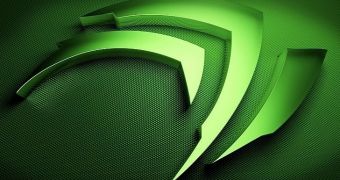NVIDIA has just announced that a new version of its Long Lived Branch for the Linux platform, 340.32, has been released and is ready for download.
The new driver from NVIDIA is now the most advanced stable build available for Linux users, but it doesn't bring anything spectacular, with the exception of a few bug fixes and support for a new Quado GPU.
Unlike the Windows platform, NVIDIA has several branches for Linux and they are designed for various users, which have either older or newer graphics cards. The developers usually promote a very stable release that makes it into most of the repositories, a short-lived version, which gathers most of the new changes, and a Beta release, which serves as a playground.
The Long Lived Branch is not usually the most advanced stable release, but it's interesting to see that, for once, NVIDIA developers are pushing a newer version that will eventually be part of various official repositories.
According to the changelog, support has been added for Quadro K420, Quadro K620, Quadro K2200, Quadro K4200, and Quadro K5200, a regression that prevented the internal stereo infrared emitter built into some 3D Vision monitors from working has been corrected, a bug that could cause some Java-based OpenGL applications using JOGL to crash on startup on systems with Xinerama enabled has been fixed, a bug that could prevent OpenGL Framebuffer Objects (FBOs) from being properly redrawn after a modeswitch has been fixed, and a memory leak that occurred when starting OpenGL applications has been corrected.
Also, a bug that prevented the EDID-Like Data (ELD) of audio-capable displays from being updated when hotplugged/unplugged has been fixed, a bug that caused Xid errors when using stereo mode 12 (HDMI 3D) on Quadro boards without an onboard stereo DIN connector has been corrected, video corruption issue for VDPAU decoding of VC-1 and WMV video streams utilizing range remapping on Maxwell GPUs have been fixed, and a "black window" bug in Ubuntu 14.04 when using the Xinerama and Composite extensions has been corrected as well.
The NVIDIA developers provide a single binary file that should work on most Linux distributions out there, but installing it might require a little bit of expertise. You can also wait for this particular driver to arrive in the official repositories.
Check out the announcement for a complete list of fixes and improvements. You can download NVIDIA Linux Display Driver 340.32 for Linux 32-bit and 64-bit. Keep in mind that you will need to manually install the drivers on your system.

 14 DAY TRIAL //
14 DAY TRIAL //